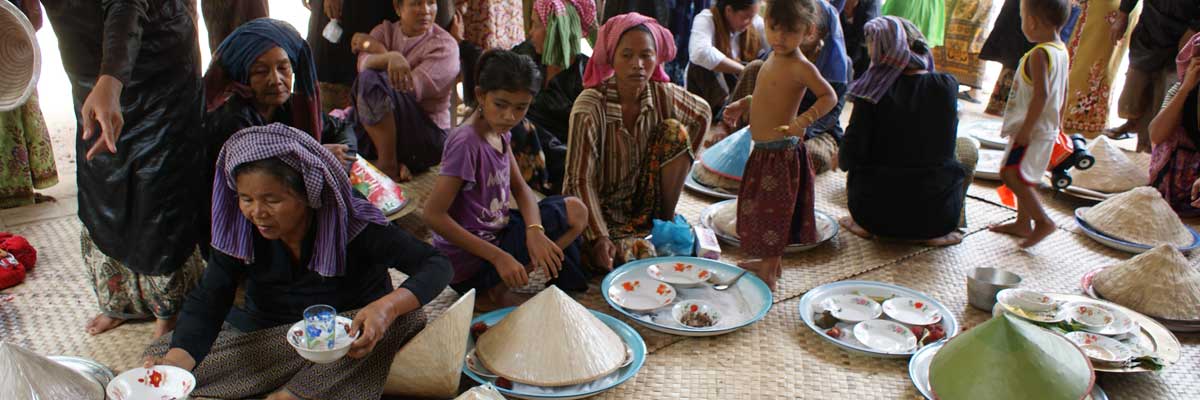
The Chăm are descendants of Champa, a longstanding kingdom that that once occupied most of today’s central Việt Nam—roughly from Quảng Bình to Đồng Nai provinces. Beginning in the late fifteenth century, the Chăm fled Vietnamese incursions into northern Champa, finding refuge in southern Champa and in the successive Buddhist kingdoms that emerged after the fall of Angkor. Some Chăm territory in Việt Nam remained intact, in gradually eroding parcels, until 1832. The Chăm in Cambodia lived in relative peace until the 1970s, when they were targeted by the Khmer Rouge. For five hundred years now, in both Việt Nam and Cambodia, only some Chăm have survived the most perilous conditions. However, international attention has never settled upon any Chăm community until now, in the Extraordinary Chambers in the Courts of Cambodia, more casually known as the Khmer Rouge tribunal. In Phnom Penh, the tribunal currently considers whether the well- documented persecutions of the Chăm in Cambodia do indeed provide sufficient evidence of the Khmer Rouge’s intent to destroy them, in whole or in part.
To many observers and survivors, there is no doubt that this ethnic and religious minority was targeted with more exacting brutality, with kill rates at double or triple the average population. Some historians claim that the Chăm had a higher rate of loss than any other ethnic group. Khmer Rouge documents from that era demand that this distinct group be “broken up” because “their lives are not so difficult.” However, the Khmer Rouge disguised their own genocidal intent in their only official statement on the Chăm, when they announced, “The Cham race was exterminated by the Vietnamese.” The Khmer Rouge claim that no Chăm had survived the conquest of Champa was certainly convenient, as noted by historian and genocide scholar Ben Kiernan. Because in the Khmer Rouge’s plan for the Chăm, “they were to ‘disappear’ as a people,” Kiernan remarked in The Pol Pot Regime. Hence the regime set out to completethe disappearance of their Chăm “enemies”—through deportation and extermination, and by forbidding their Islamic worship, their use of Chăm language, and their retention of all distinctive cultural practices.
In Koh Kong province in 1983, the survivors recalled these incidents of brutality.
starvation; blindfolding and beating to death; tying legs with rope and dragging; tying up both hands and legs and confining to a crucifix; tying people together and ordering them to walk in lines and shooting them to death from behind and then throwing them into the sea; throwing young children into the sea to drown; hitting young children against trees; and raping women before taking them to be killed.
Despite such horrifying evidence of the widespread inhumanity of the Khmer Rouge regime, these signing survivors were unsuccessful in their request. For various political reasons, the petition failed to move the UN or to remove the Khmer Rouge from Cambodia’s seat in the UN General Assembly. And it would be nearly another thirty years before the very crimes detailed in those early petitions would surface as evidence in court, as they are now. As the Documentation
Center of Cambodia attests, “All of these documents offer profound evidence of the crimes committed, including that of genocide, during Democratic Kampuchea.”
Source: https://dvan.org/2010/12/democratic-kampucheas-genocide-of-the-cham/
